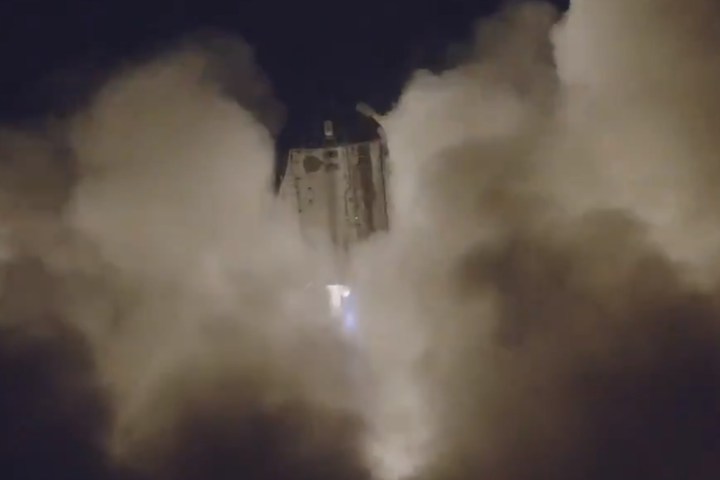
SpaceX successfully launched a test prototype of its future Starship rocket, called Starhopper, on Thursday. The test version of the rocket was launched from a location in Texas and was able to hover in the air for a few seconds before it returned to the ground and landed.
That might not sound all that impressive, but it was the first time SpaceX was able to get the rocket off the ground using its next-generation rocket engine called Raptor.
The spacecraft is called Starhopper specifically because it was designed to do those short takeoffs and landings, or “hops.”
The launch happened a day after the company had to abort a test launch of the rocket. On Wednesday, the rocket’s engine appeared to fire up, but then flames and smoke appeared at the top of the spacecraft and SpaceX scrapped the test.
Commenting during a livestream Wednesday, SpaceX engineer Kate Trice said “As I mentioned before, this is a development program — today was a test flight designed to test the boundaries of the vehicle.”
A similar test last Tuesday evening also ended in flames.
Starship, the big brother to the Starhopper vessel being tested, is ultimately expected to be used as a commercial spacecraft. Unlike some other spacecraft, the vessel is expected to be entirely reusable. When completed, it will be able to take off and land multiple times, similar to an airplane.
Engine cam pic.twitter.com/3cWHU50353
— Elon Musk (@elonmusk) July 26, 2019
Thursday evening’s test took roughly 15 seconds.
Another test of the vessel is expected to happen in a week or two. Thursday’s test had the vessel fly 65 feet in the air. The next test will attempt to have Starhopper fly considerably higher, 650 feet in the air.
Thursday was a banner day for SpaceX. Along with the successful Starhopper test, the company launched its Dragon spacecraft into orbit using a Falcon 9 rocket from Cape Canaveral Air Force station in Florida earlier in the afternoon. The ship contains about 5,000 lbs of supplies and experimentation equipment bound to arrive at the International Space Station on Saturday. That launch went off without a hitch after SpaceX was forced to scrap a planned launch on Wednesday due to bad weather.
SpaceX hopes to have Starship ready for commercial flights by 2021.



